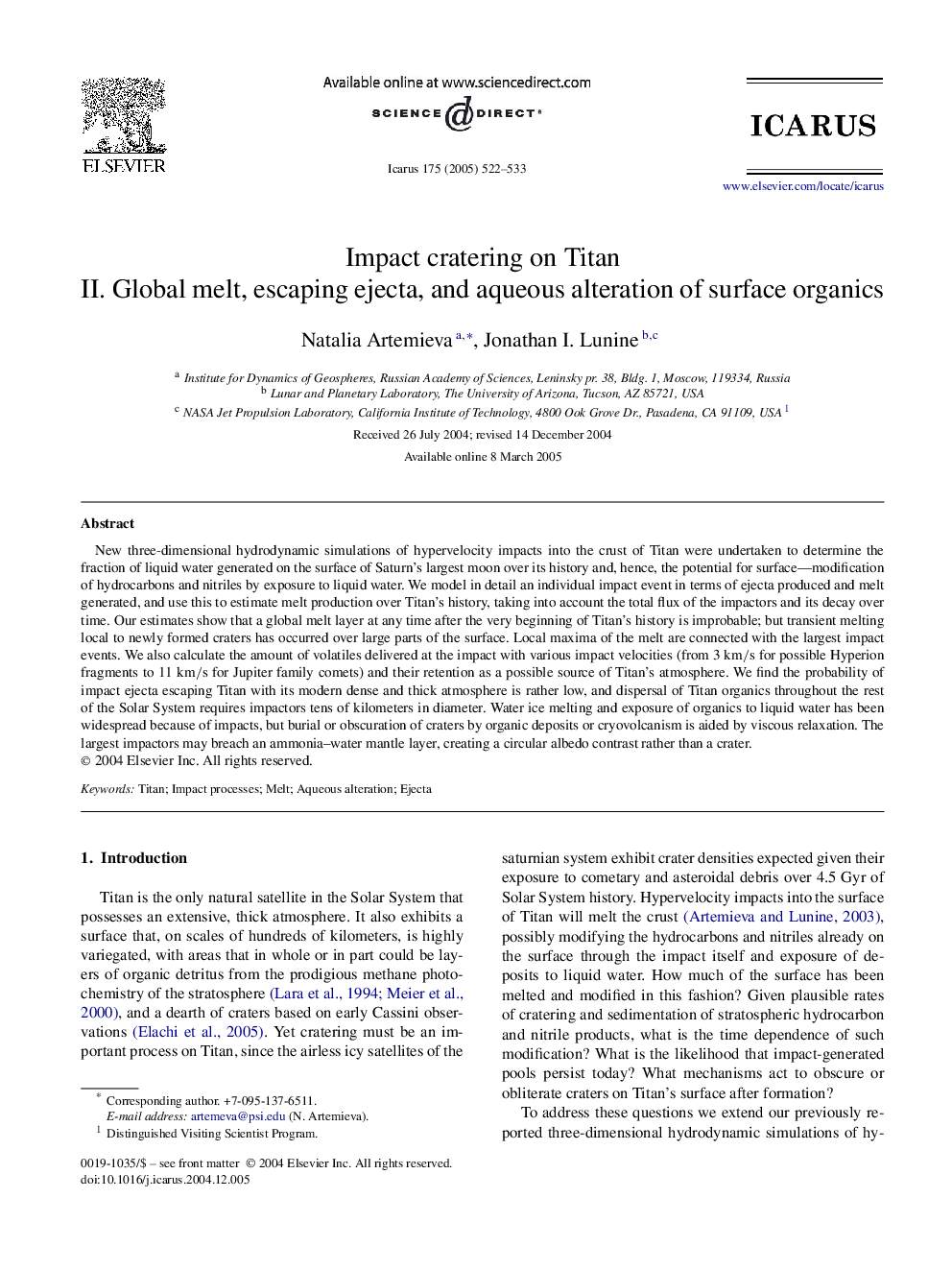| Article ID | Journal | Published Year | Pages | File Type |
|---|---|---|---|---|
| 10702071 | Icarus | 2005 | 12 Pages |
Abstract
New three-dimensional hydrodynamic simulations of hypervelocity impacts into the crust of Titan were undertaken to determine the fraction of liquid water generated on the surface of Saturn's largest moon over its history and, hence, the potential for surface-modification of hydrocarbons and nitriles by exposure to liquid water. We model in detail an individual impact event in terms of ejecta produced and melt generated, and use this to estimate melt production over Titan's history, taking into account the total flux of the impactors and its decay over time. Our estimates show that a global melt layer at any time after the very beginning of Titan's history is improbable; but transient melting local to newly formed craters has occurred over large parts of the surface. Local maxima of the melt are connected with the largest impact events. We also calculate the amount of volatiles delivered at the impact with various impact velocities (from 3 km/s for possible Hyperion fragments to 11 km/s for Jupiter family comets) and their retention as a possible source of Titan's atmosphere. We find the probability of impact ejecta escaping Titan with its modern dense and thick atmosphere is rather low, and dispersal of Titan organics throughout the rest of the Solar System requires impactors tens of kilometers in diameter. Water ice melting and exposure of organics to liquid water has been widespread because of impacts, but burial or obscuration of craters by organic deposits or cryovolcanism is aided by viscous relaxation. The largest impactors may breach an ammonia-water mantle layer, creating a circular albedo contrast rather than a crater.
Related Topics
Physical Sciences and Engineering
Earth and Planetary Sciences
Space and Planetary Science
Authors
Natalia Artemieva, Jonathan I. Lunine,
